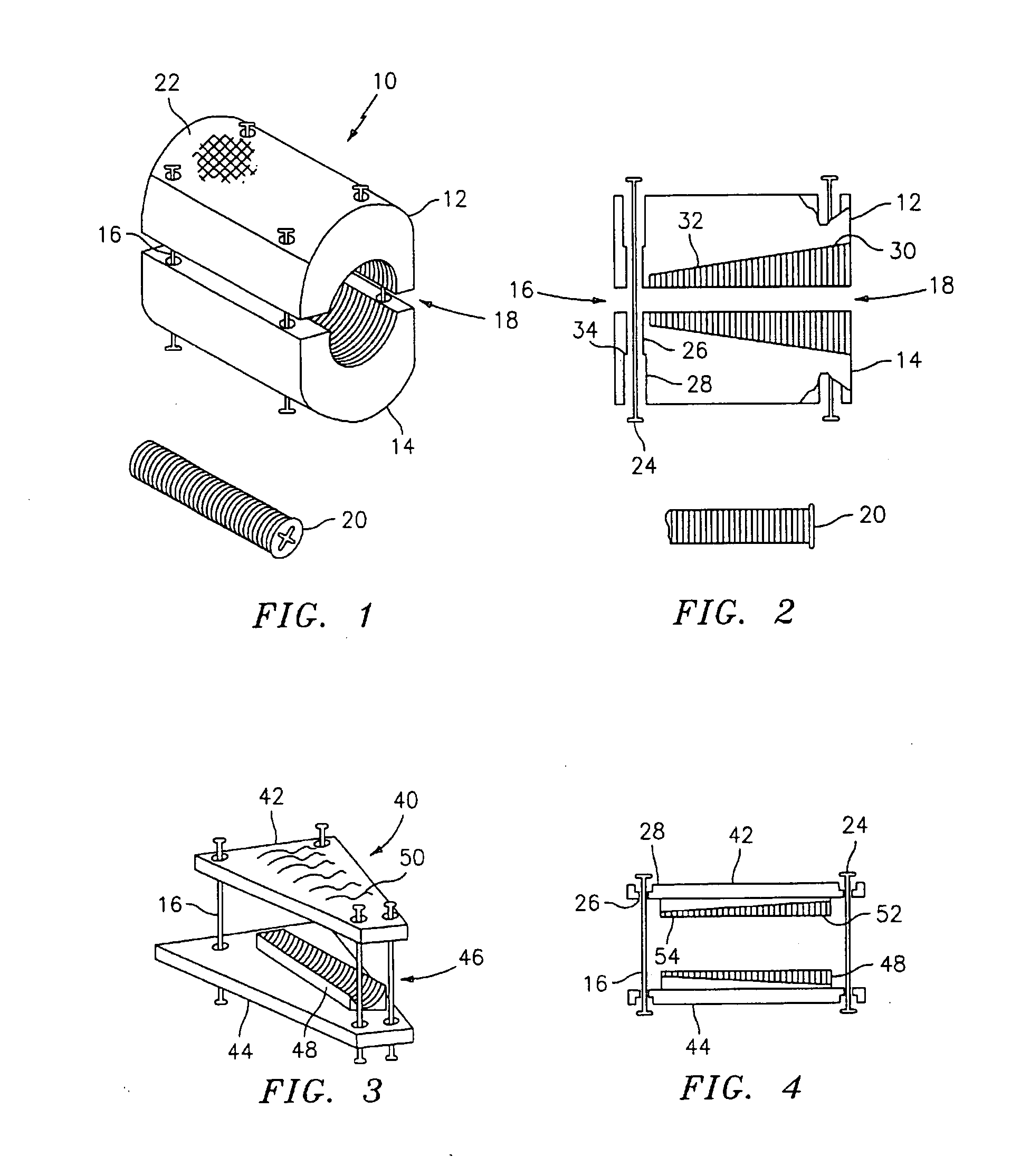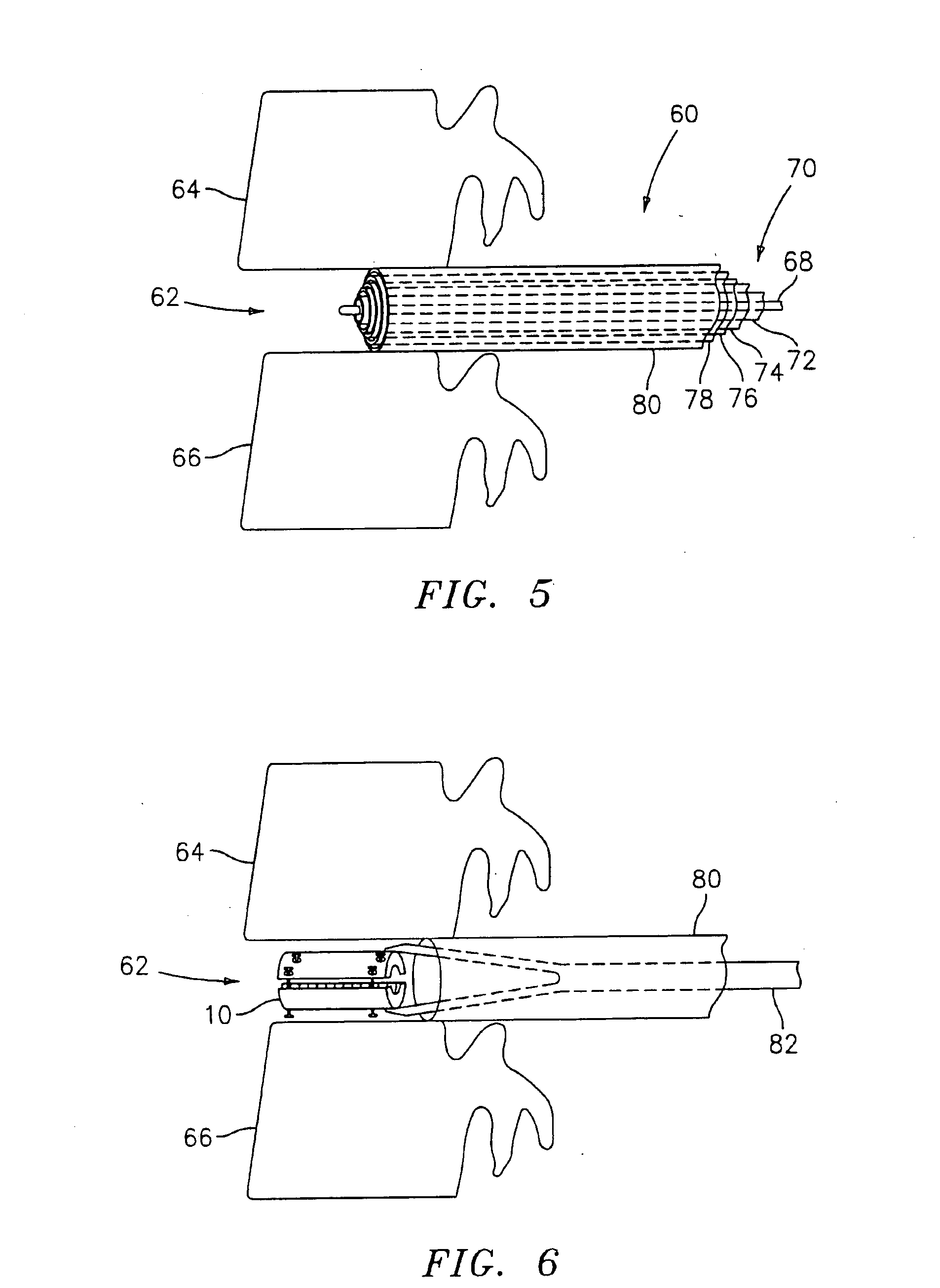Device for lumbar surgery
a technology for lumbar surgery and lumbar spine, applied in the field of lumbar spine surgery, can solve the problems of large incisions and complicated procedures, and achieve the effect of reducing recovery time and reducing trauma to patients
- Summary
- Abstract
- Description
- Claims
- Application Information
AI Technical Summary
Benefits of technology
Problems solved by technology
Method used
Image
Examples
Embodiment Construction
[0032] Referring now to the drawings, in which like reference numerals identify similar or identical elements throughout the several views, and inn particular to FIG. 1, there is shown the expandible intervertebral disc spacer device 10 according to the present invention. Preferably, the disc spacer 10 is comprised of two similarly shaped halves 12, 14 that are opposed to each other and loosely connected by pins 16. The outer surface of each half may be scored, as indicted by reference numeral 22, for facilitating adherence to the end plates of the vertebral bodies between which disc spacer 10 is placed. When top half 12 and bottom half 14 are assembled, together they may form a cylinder, a cube, a rectangular box, or any geometric shape that may be split to form two opposed halves. A tapered bore 18 is provided, which has a larger diameter 30 at a first end and a smaller diameter 32 at a second end. Preferably, tapered bore 18 is threaded over at least a portion of its length. Whil...
PUM
 Login to View More
Login to View More Abstract
Description
Claims
Application Information
 Login to View More
Login to View More - R&D
- Intellectual Property
- Life Sciences
- Materials
- Tech Scout
- Unparalleled Data Quality
- Higher Quality Content
- 60% Fewer Hallucinations
Browse by: Latest US Patents, China's latest patents, Technical Efficacy Thesaurus, Application Domain, Technology Topic, Popular Technical Reports.
© 2025 PatSnap. All rights reserved.Legal|Privacy policy|Modern Slavery Act Transparency Statement|Sitemap|About US| Contact US: help@patsnap.com



